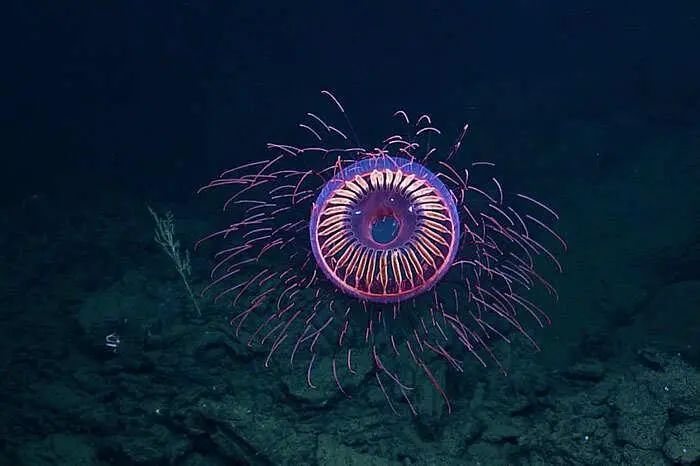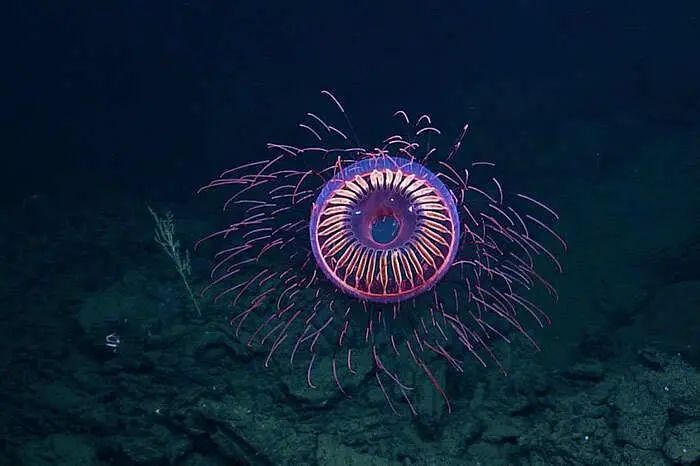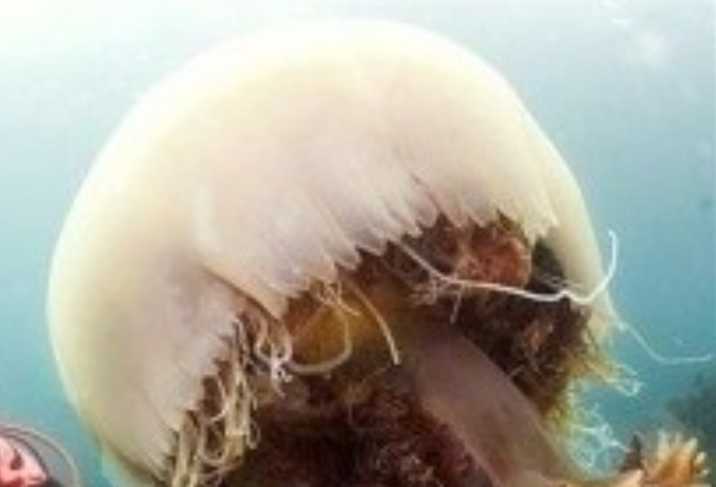The Fireworks Jellyfish: Deep-Sea Marvel Illuminating 1,200–1,500 Meters Below the Surface
Discovered in the pitch-black abyssal zone, the fireworks jellyfish (Halitrephes maasi) earns its name from its spectacular bioluminescent display—vibrant orange and pink tentacles that explode like celestial pyrotechnics in the ocean’s darkest depths. Thriving between 1,200 and 1,500 meters, this gelatinous creature has captivated marine biologists with its otherworldly appearance and mysterious life cycle.

Source: Images from the Internet, if there is any infringement, please contact the removal of
A Living Explosion in the Abyss: Anatomy and Adaptations
- Bioluminescence as a Survival Tool
The jellyfish features a bell-shaped body up to 15 cm in diameter, ringed by long, branching tentacles coated in photophores—organs that emit bright orange and pink light. This glow, triggered by chemical reactions, serves dual purposes: attracting prey (such as small crustaceans) and confusing predators. The light patterns mimic the disorienting effect of a fireworks show, allowing the jellyfish to escape or ambush. - Structure for Extreme Pressure
Its gelatinous body is adapted to withstand the crushing pressure of the deep sea, with a transparent bell that reduces drag as it drifts. Unlike shallow-water jellyfish, it lacks a prominent mouth, instead absorbing nutrients through its tentacles, which are covered in sticky cells to capture plankton.
Life in the Lightless Depths
- Feeding and Locomotion
The fireworks jellyfish floats slowly, using gentle pulsations of its bell to move. Its tentacles trail behind, spread wide to intercept passing prey. When threatened, it can retract its tentacles and increase its bioluminescent glow, potentially signaling to larger predators to deter attackers. - Rarity and Research Challenges
Due to its deep-sea habitat, the species is rarely observed, with most sightings coming from remotely operated vehicles (ROVs). Scientists believe it reproduces sexually, releasing eggs and sperm into the water, but details about its lifecycle remain unknown. Its distribution is thought to be global in temperate and tropical oceans, though confirmed sightings are limited to the Pacific and Atlantic.
Ecological Significance and Conservation
While the fireworks jellyfish’s exact role in deep-sea ecosystems is unclear, it serves as a vital food source for larger abyssal creatures like grenadiers and gulper eels. Its bioluminescence also contributes to the "twilight zone" of the ocean, where light signals are crucial for communication and survival.
As deep-sea mining and climate change threaten these fragile ecosystems, the fireworks jellyfish stands as a symbol of the ocean’s undiscovered wonders. Its ephemeral glow reminds humanity of the urgent need to protect the abyss—where life evolves in ways that challenge imagination, and every flash of light holds secrets yet to be uncovered.
-------- END --------






